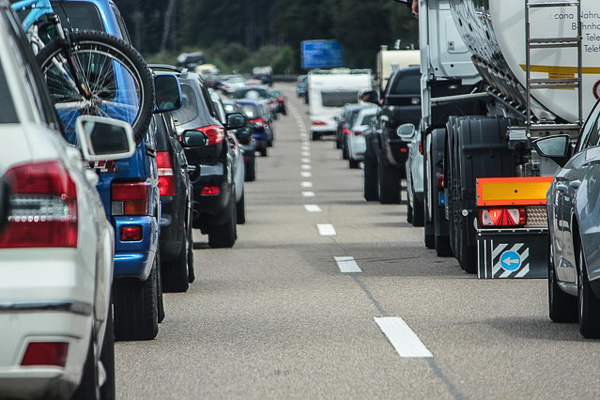Research Recap: Does investment in public transit decrease traffic congestion?

“The effects of public transit supply on the demand for automobile travel”
Disciplines represented:
Environmental, energy, and resource economics; decision making, sustainability
Schools/contributing organizations:
- School of Interdisciplinary Arts & Sciences, University of Washington Tacoma
- The Charles H. Dyson School of Applied Economics and Management, Cornell University
Co-authors:
- Justin Beaudoin, School of Interdisciplinary Arts & Sciences, University of Washington Tacoma
- C.-Y. Cynthia Lin Lawell, Robert Dyson Sesquicentennial Chair in Environmental, Energy, and Resource Economics and Associate Professor, Cornell University
Summary:
Anyone who has idled in traffic anxiously watching the clock is all too familiar with the costs of traffic congestion. Congestion is ubiquitous across urban roadways and is a persistent topic of policy debate. The costs of congestion—which include increased operating costs for both private and freight vehicles, increased fuel usage and emissions, and, most significantly, the delay costs and uncertain travel times confronting motorists—are substantial and have been steadily increasing.
Public transit is often advocated as a means to address traffic congestion within urban transportation networks. In a recent paper, University of Washington Assistant Professor Justin Beaudoin and Dyson School Associate Professor Cynthia Lin Lawell estimate the effect of past public transit investment on the demand for automobile transportation using data from 96 urban areas across the United States from 1991 to 2011.
On one hand, an increase in transit supply may cause some commuters to substitute transit travel for trips previously taken by automobile (the “substitution effect”), thereby decreasing auto travel. On the other hand, by reducing congestion, increasing accessibility, increasing economic activity, and/or attracting additional residents and workers to the area, transit investment may generate additional automobile trips that were previously not undertaken (the “induced demand effect”). Beaudoin and Lin Lawell find that, owing to the countervailing effects of substitution and induced demand, the effects of increases in public transit supply on auto travel depend on the time horizon.
In the short run, when accounting for the substitution effect only, they find that, on average, a 10 percent increase in transit capacity leads to a 0.7 percent reduction in auto travel. However, transit has no effect on auto travel in the medium run, as latent and induced demand offset the substitution effect. In the long run, when accounting for both substitution and induced demand, they find that, on average, a 10 percent increase in transit capacity is associated with a 0.4 percent increase in auto travel.
They also find that public transit has significantly different effects on auto travel demand in smaller, less densely populated regions with less-developed public transit networks than in larger, more densely populated regions with more extensive public transit networks.
Publication information:
“The effects of public transit supply on the demand for automobile travel” was published in the Journal of Environmental Economics and Management in March 2018.
Read the full article to learn more about the effects of public transit supply on the demand for automobile travel.
